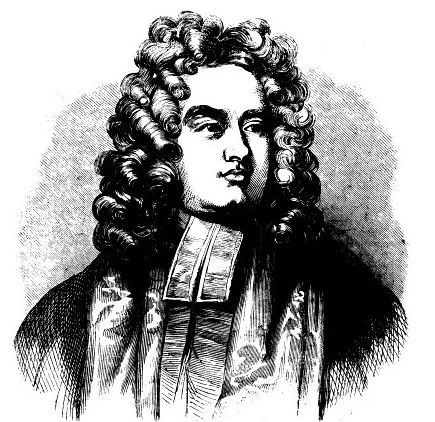Irish Writer Jonathan Swift: Life and Major Works
Jonathan Swift (1667–1745) is widely regarded as one of the greatest satirists in English literature. Known for his keen wit, biting satire, and deep insights into human nature and society, Swift’s works have remained influential for centuries. Born in Dublin, Ireland, Swift was an Anglo-Irish writer, poet, essayist, and clergyman who became the Dean of St. Patrick’s Cathedral in Dublin, a position that earned him the nickname “Dean Swift.” His life and works reflect both his personal struggles and his desire to address the moral and social issues of his time.
Swift’s writing style is marked by irony, humor, and a masterful command of both Horatian (gentle) and Juvenalian (harsh) satire, allowing him to critique societal injustices, political corruption, and human folly. Throughout his career, Swift published under various pseudonyms, including Lemuel Gulliver, Isaac Bickerstaff, and M. B. Drapier, adopting different personas to present his ideas from unique perspectives. His works, particularly Gulliver’s Travels and A Modest Proposal, have cemented his legacy as a literary giant, and his use of satire has inspired countless writers since.

Jonathan Swift; Portrait by Irish portrait Charles Jervas, 1710
Early Life and Education
Jonathan Swift was born on November 30, 1667, in Dublin, Ireland, to Anglo-Irish parents. His father died before he was born, leaving the family in financially strained circumstances. Swift’s mother moved back to England, leaving him to be raised by his uncle, Godwin Swift. Despite the hardships he faced, Swift received a solid education. He attended Kilkenny College, one of Ireland’s best schools at the time, and later enrolled at Trinity College, Dublin, where he earned a Bachelor of Arts degree in 1686.
During his time at Trinity, Swift’s studies were interrupted by political turmoil in Ireland, specifically the Glorious Revolution of 1688, which forced him to move to England. In England, he worked as a secretary to Sir William Temple, a retired diplomat and writer who had a significant influence on Swift’s intellectual development. It was during his time at Temple’s estate that Swift began honing his writing skills and became acquainted with literary and political circles. Temple also introduced Swift to Esther Johnson, known as “Stella,” who would become one of the most important people in Swift’s life.
Early Works and Political Writings
Swift’s first major work, A Tale of a Tub, published in 1704, established his reputation as a satirist. The book is an allegorical satire that critiques the corruption and excesses of religious institutions, particularly targeting the Roman Catholic Church, Anglican Church, and Puritans. The work’s complex structure, blending satire with digressions and narrative interruptions, challenged readers and critics alike, and though controversial, it showcased Swift’s literary skills and boldness.
Around the same time, Swift published The Battle of the Books, a short satire on the “quarrel of the Ancients and the Moderns,” a debate over the value of classical literature versus contemporary ideas. Swift took the side of the Ancients, defending the enduring value of classical knowledge and virtues. These early works reflected Swift’s desire to use satire as a means of critiquing society and promoting reason and virtue.

Jonathan Swift in 1682, by Thomas Pooley.
Swift became increasingly involved in political issues, and in 1707 he moved back to Ireland to serve as a political adviser. During this time, he wrote pamphlets that expressed his strong opposition to English policies that exploited Ireland. He published A Modest Proposal in 1729, one of the most scathing satirical essays in English literature. Written in a deadpan, ironic style, Swift “suggested” that the impoverished Irish might ease their economic burdens by selling their children as food to wealthy English landlords. The essay’s shocking premise underscored the brutal treatment of the Irish by the English and highlighted the moral failings of those who ignored or perpetuated these injustices. A Modest Proposal remains one of the most famous examples of satire, symbolizing the term “Swiftian” for its ironic, morally charged tone.
Gulliver’s Travels: Swift’s Magnum Opus
In 1726, Swift published his most famous work, Gulliver’s Travels, under the pseudonym Lemuel Gulliver. The book was an instant success and is now considered a classic of English literature. Structured as a travel narrative, Gulliver’s Travels tells the story of Lemuel Gulliver, a ship’s surgeon who journeys to various strange lands, each serving as a satirical representation of different aspects of human society and government.

First edition of Gulliver’s Travels
The novel is divided into four parts:
- Lilliput – Gulliver’s first destination, where he encounters a society of tiny people, the Lilliputians. Here, Swift satirizes the pettiness of political conflicts, especially the disputes between the Whigs and Tories in England, showing how trivial issues often escalate into major controversies.
- Brobdingnag – In the land of the giants, Gulliver is now the tiny one, and the Brobdingnagians view human society with disgust, as Swift critiques human cruelty and moral corruption from an outsider’s perspective.
- Laputa and Lagado – Swift turns to science and philosophy, using the floating island of Laputa to mock intellectual pretensions and the impracticality of some scientific endeavors. The inhabitants are obsessed with theoretical knowledge but are detached from practical concerns.
- The Land of the Houyhnhnms – Gulliver’s final journey takes him to a land ruled by intelligent, rational horses (Houyhnhnms) who live in harmony, unlike the brutish, human-like Yahoos. Here, Swift critiques humanity as a whole, highlighting its irrationality, greed, and lack of self-control.
Gulliver’s Travels is both a comic adventure and a philosophical exploration of human nature, questioning the validity of European values and assumptions about civilization. Swift’s use of fictional societies to critique real-world issues is a powerful example of how satire can reveal uncomfortable truths. While often enjoyed as a children’s story for its fantasy elements, Gulliver’s Travels remains one of the most sophisticated and cutting satires of human folly and vice.
Other Significant Works
Swift was prolific and wrote many notable works throughout his life. Some of these include:
- An Argument Against Abolishing Christianity (1712): In this ironic essay, Swift humorously argues against proposals to abolish Christianity, satirizing the hypocrisy and corruption within religious institutions and society’s shallow piety. Through wit and irony, he exposes the contradictions in the attitudes of the English toward religion and morality.
- Drapier’s Letters (1724–1725): A series of pamphlets published under the pseudonym M.B. Drapier, these letters protested the English government’s decision to impose a new coinage on Ireland. Swift’s arguments sparked public outrage and resistance, ultimately contributing to the cancellation of the coinage scheme. Drapier’s Letters marked Swift as a hero in Ireland and demonstrated his commitment to defending Irish interests against English exploitation.
Later Life and Declining Health
Swift continued to write and participate in political life, but his later years were marked by declining health. He suffered from an inner ear disorder, likely Meniere’s disease, which caused dizziness and vertigo. Swift’s mental health also deteriorated, and by the early 1740s, he began to suffer from severe memory loss and other cognitive difficulties. By the time of his death on October 19, 1745, he was essentially incapacitated.
Swift never married, but his relationships with Esther Johnson (“Stella”) and Esther Vanhomrigh (“Vanessa”) were significant. Both women were close to Swift, and his relationship with Stella, in particular, was one of deep friendship and loyalty, though it is unclear whether it was romantic. His ambiguous relationships with both women have led to much speculation and have added to the intrigue surrounding his personal life.
Swift left much of his estate to fund the establishment of a hospital for people with mental illness, St. Patrick’s Hospital in Dublin, which still operates today. His legacy as a writer and social critic continued to grow after his death, with his works becoming central to studies of English satire and political literature.
Style, Satire, and Lasting Influence
Swift’s writing is characterized by irony, wit, and a keen sense of the absurdities of human behavior. He was a master of both Horatian satire, which uses gentle humor to poke fun at human weaknesses, and Juvenalian satire, which takes a more abrasive, scathing approach to criticism. This versatility allowed him to address a wide range of issues, from political corruption to religious hypocrisy, with a style that was accessible yet deeply insightful.
Swift’s influence on literature and satire cannot be overstated. His work has inspired writers such as Voltaire, George Orwell, Mark Twain, and Aldous Huxley, all of whom used satire to challenge prevailing social and political norms. Swift’s use of fictional personas and pseudonyms, like Lemuel Gulliver and M. B. Drapier, allowed him to present his ideas from different perspectives, giving his critiques an added layer of complexity and engagement.
Swift’s satire has also had a lasting impact on public consciousness. Terms like “Swiftian” are used to describe satirical works that use irony to expose societal flaws. His ability to address complex issues with humor and moral depth has made his works timeless. A Modest Proposal, for instance, continues to be studied and referenced as an example of powerful, socially charged satire.
Legacy of Jonathan Swift
Jonathan Swift remains one of the most celebrated satirists in Western literature. His sharp critiques of human nature, government, religion, and society resonate with readers across generations. His works are often seen not only as literary achievements but as powerful calls for justice, honesty, and moral integrity. Swift’s ability to blend humor with deep social critique has cemented his reputation as a unique and essential voice in English literature.
By challenging readers to question their values and societal norms, Swift’s writings remain as relevant today as they were in his own time. His life, full of personal challenges and his profound dedication to intellectual and moral principles, is reflected in his works, which continue to inspire, educate, and provoke readers around the world. Through works like Gulliver’s Travels, A Modest Proposal, and many others, Swift’s legacy as a literary master and social critic endures.
Frequently Asked Questions

Jonathan Swift was an Anglo-Irish writer renowned for his sharp wit and satirical works. Image: Bust of Jonathan Swift in St Patrick’s Cathedral, Dublin, Ireland
What position did Jonathan Swift hold in Dublin, and what nickname did it earn him?
Swift was the Dean of St. Patrick’s Cathedral in Dublin, earning him the nickname “Dean Swift.”
Name some of Jonathan Swift’s most celebrated works.
His notable works include A Tale of a Tub (1704), An Argument Against Abolishing Christianity (1712), Gulliver’s Travels (1726), and A Modest Proposal (1729).
How does the Encyclopædia Britannica view Swift’s contributions to literature?
The Encyclopædia Britannica regards Swift as one of the greatest prose satirists in English literature.
How did Jonathan Swift publish his works, and why?
Swift published his works under pseudonyms like Lemuel Gulliver and Isaac Bickerstaff or anonymously to convey different perspectives and personas.
What types of satire did Jonathan Swift master in his writing?
Swift mastered Horatian satire, which gently mocks societal follies, and Juvenalian satire, which harshly criticizes vices and corruption.
What does the term “Swiftian” mean in literature?
“Swiftian” refers to satirical works that use irony, in the manner of Swift, to expose societal injustices.

In A Modest Proposal, Swift uses a deadpan, ironic style to “suggest” eating children to address poverty, highlighting social injustice with shock and satire. Image: An 1850 illustration of Swift



























